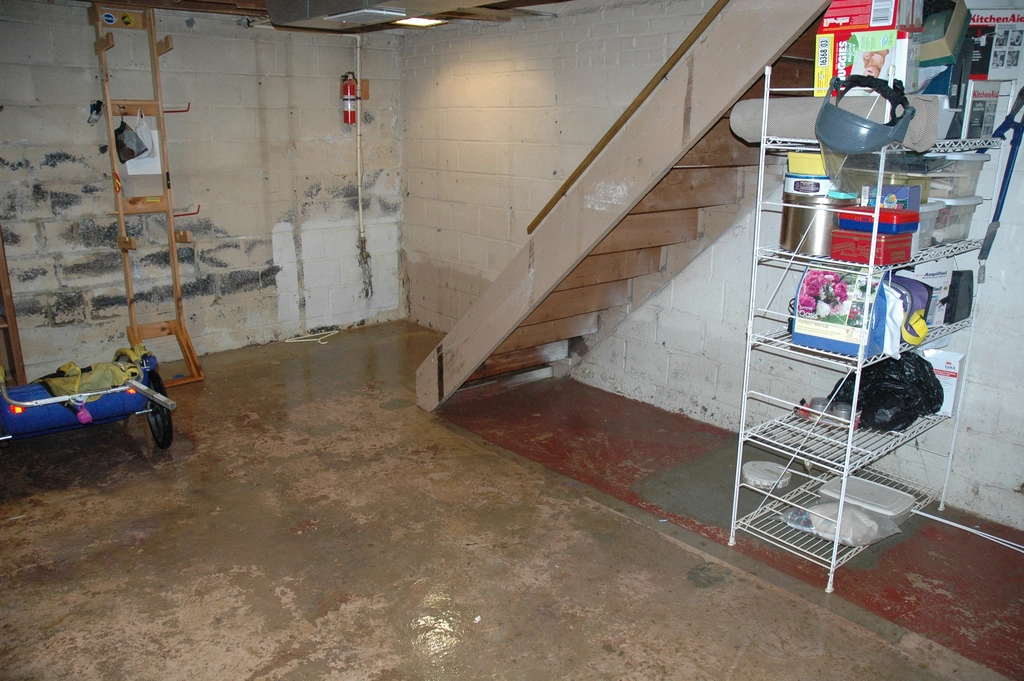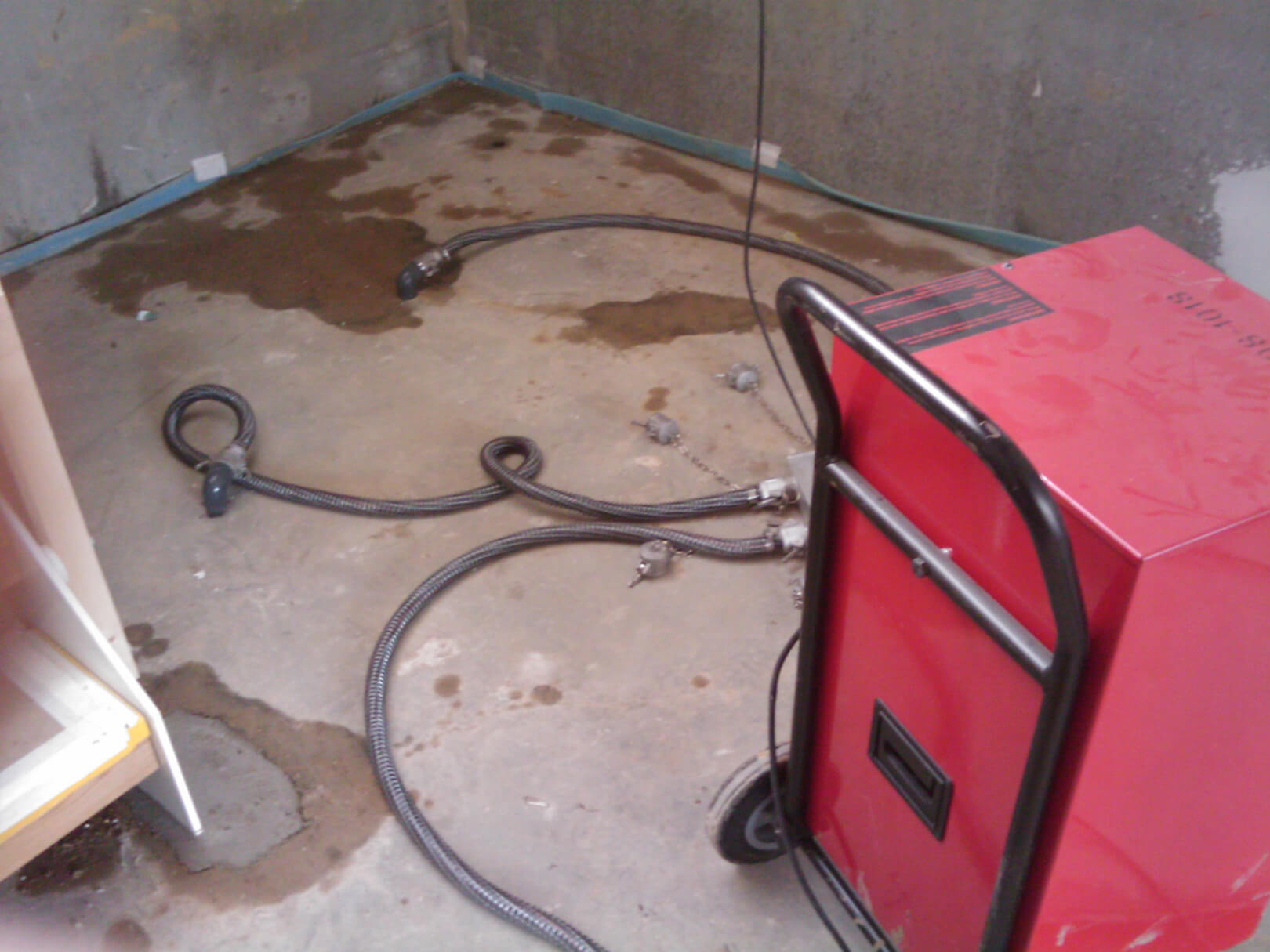A flooded basement can be extremely costly. And depending on the cause, may not even be covered by your insurance.
To keep damage (and therefore costs) to a minimum, you need to act quickly if you find water in your basement. If you’re not sure what to do if your basement ever floods, read on to avoid unnecessary damage.
How Much Damage Can a Flooded Basement Actually Cause?

Apart from the obvious damage to possessions, a flooded basement can be costly to remediate, with costs only escalating the longer it is left.
Water damaged carpets and rugs are difficult to fully clean and will most likely need discarding. Plasterboard and woodwork will need replacing, and electrics may be damaged.
If left, clean water (from pipes and feeds into white goods) can quickly turn grey. Bacteria will begin growing and the affected areas will then require decontamination. This is on top of already needing water extraction, cleaning, and drying, resulting in a longer and more costly remediation process. This can happen in as little as 24 – 48 hours.
All flood water is considered black. So if your basement has been flooded due to groundwater flooding or other external causes, you should avoid entering it. Blackwater is grossly unhygienic and contains bacteria and contaminants that could make you seriously ill. So any area affected by blackwater requires thorough decontamination and sanitation before it is safe to re-enter.
If your basement has been tanked, and yet you still experienced flooding from an external cause, the waterproofing should be looked at to find out why. At Ideal Response, we will do this as part of our process to help keep inconvenience to a minimum and so that you can take measures to prevent such flooding from happening again.
Drying and Mould

If your basement isn’t dried out adequately, you’ll risk issues with ongoing damp, rot and mould. These can go on to cause health issues for your whole family, with children, the elderly and those with pre-existing respiratory problems at particular risk.
Quick action needs to be taken to extract water and begin the drying process. Mould can colonise in as little as 24 – 48 hours. And once it has established, it doesn’t need as much moisture to then keep growing.
Rotting will affect the woodwork within the basement and the structural framing to your house, jeopardising its structural integrity. And if damp becomes trapped between layers in the building, it can takes months to dry out.
Cross Contamination
When dealing with a flooded basement containing grey or black water, cross contamination is a real concern. Because grey and black water contain contaminants that could be hazardous to health, it is important that any items that have been affected by the flood are kept separately to any clean, unaffected areas.
If they’re not, then the previously clean, unaffected area will now be contaminated too. This can be as simple as walking through a previously clean hallway wearing the same boots you went into the basement wearing, to picking up an item from the basement and moving it somewhere “safe” before the cleaning process begins.
Odour Removal
Any area that’s experienced water damage usually has a lingering foul odour for some time after. Especially if mould becomes a problem. An experienced remedial company will be able to offer odour elimination services to make an area habitable again.
So What Causes Basement Flooding Anyway?
So now we know the damage that flooded basements can cause, let’s take a look at the possible causes.
Groundwater flooding, flash flooding, poor drainage, malfunctioning sump pumps and internal plumbing faults are all common causes of flooded basements.
Buildings with basements are usually designed with a sump pit underneath. A sump pit is a pit or hollow in which water (or other liquid) can collect. But if this water, for whatever reason, cannot be drained away, then the pit will continue to fill until it overflows, subsequently flooding your basement.
Sump pump and drainage faults
To help reduce the risk of a sump pit overflowing, sump pumps are often installed. This is commonly done at build stage, although many homeowners fit them retrospectively, and often at significant cost. The purpose of these pumps is to periodically pump collected water out and away from the pit.
It is essential that these sump pumps and drainage systems are regularly maintained. If they’re not, the water from your sump pit doesn’t get drained away adequately and thus risks overflowing and flooding your basement.
Groundwater flooding
If you live on a low-lying area, or in an area with a naturally high water table, you are more at risk of groundwater flooding being the cause of a flooded basement. This is because the surrounding soil is going to already be somewhat saturated, therefore less water is able to drain away from the sump pit.
During heavy rainfall, this could cause the sump pit to overflow, allowing water ingress through all the cracks and joints in the basement flooring.
Burst water mains
A burst water main can unleash gallons of water in a very short space of time. And if you have a basement, you’re likely to be affected. Whether you have a sump pit will be irrelevant as the water will make its way through any cracks and crevices in your basement’s brickwork. If your basement is tanked (a form of waterproofing), this should help keep water out.
Internal plumbing fault
An internal leak or flood can have devastating results. And unfortunately, no amount of tanking or sump pits will help in this situation. If you have pipes that run through the basement, or white goods stored in your basement, an internal flood is a risk.
Consider that on average, washing machines use 40 – 50 litres of water per wash. Now imagine if the supply pipe bursts, or the connections come away, even mid-wash? That’s a lot of water that will flood your basement!
To help prevent floods caused by white good malfunctions, check them regularly. This includes all pipework and connections.
Remember:
- Acting quickly in the event of a basement flood will save valuable time and costs, while minimising the risk of secondary damage such as mould and rot.
- Mould can colonise in as little as 24 – 48 hours, the same time it takes for clean water to turn grey and grey water to turn black.
- All flood water is considered black and should be avoided unless you have the correct PPE (Personal Protective Equipment).
- By employing strict procedures backed up with ATP swab testing, cross contamination can be avoided by professional restoration companies such as Ideal Response.
- If you experience basement flooding but your basement is tanked or waterproofed in some other form, this should be checked during the restoration process to help avoid it from happening again.
- Ensure regular checks and maintenance of sump pumps, pipework and white good connection points to avoid further flooding.



